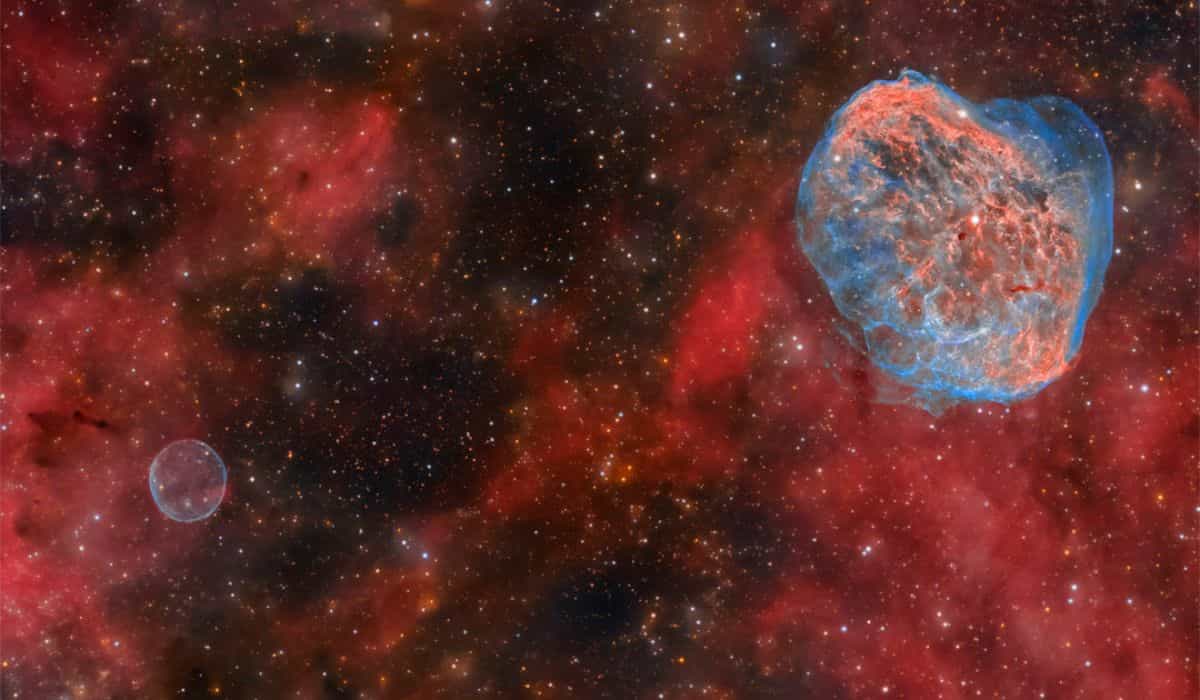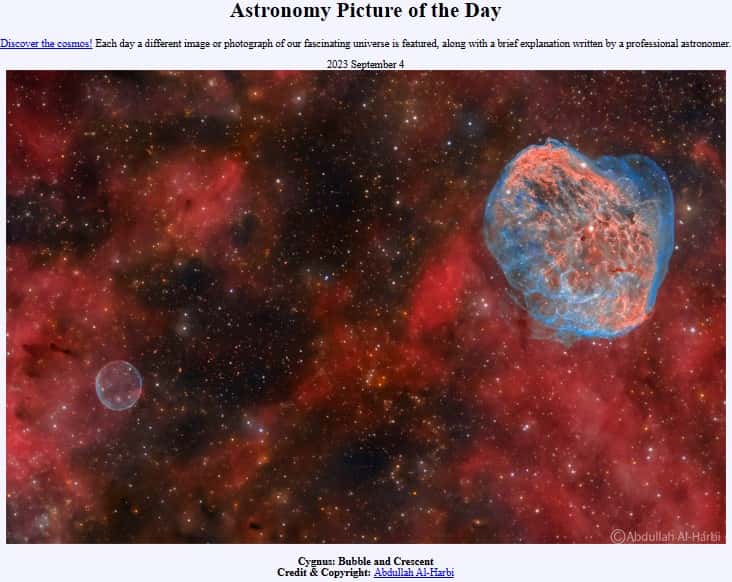
Every day, NASA shares incredible images of the Universe as the “Astronomical Photo of the Day.” This Monday (4), the American agency decided to highlight two clouds of gas and dust resulting from the deaths of stars.
+NASA highlights incredible photo of star cluster
+James Webb and Hubble release photos of Supernova 1987A
The two cosmic clouds of gas and dust, which were created at the end of stars’ lives, can be found in the direction of the Cygnus constellation, located approximately 5,000 light-years away from Earth.
In the lower left corner of the image, you can see the “Soap Bubble Nebula.” This nebula was formed when a massive star known as Wolf-Rayet, named WR 136, died and released its outer layer in a powerful stellar wind. WR 136 is burning its fuel at an incredible rate and is approaching the end of its life, which is expected to culminate in a spectacular supernova explosion.
In the upper right corner, there is the “Crescent Nebula,” also cataloged as NGC 6888, which, in addition to originating from the end of a star’s life cycle, was a smaller and longer-lived star, similar to our Sun. Eventually, this star will transform into a white dwarf, cooling down slowly. The Crescent Nebula has a diameter of about 25 light-years.

Source: NASA “Astronomical Photo of the Day”

